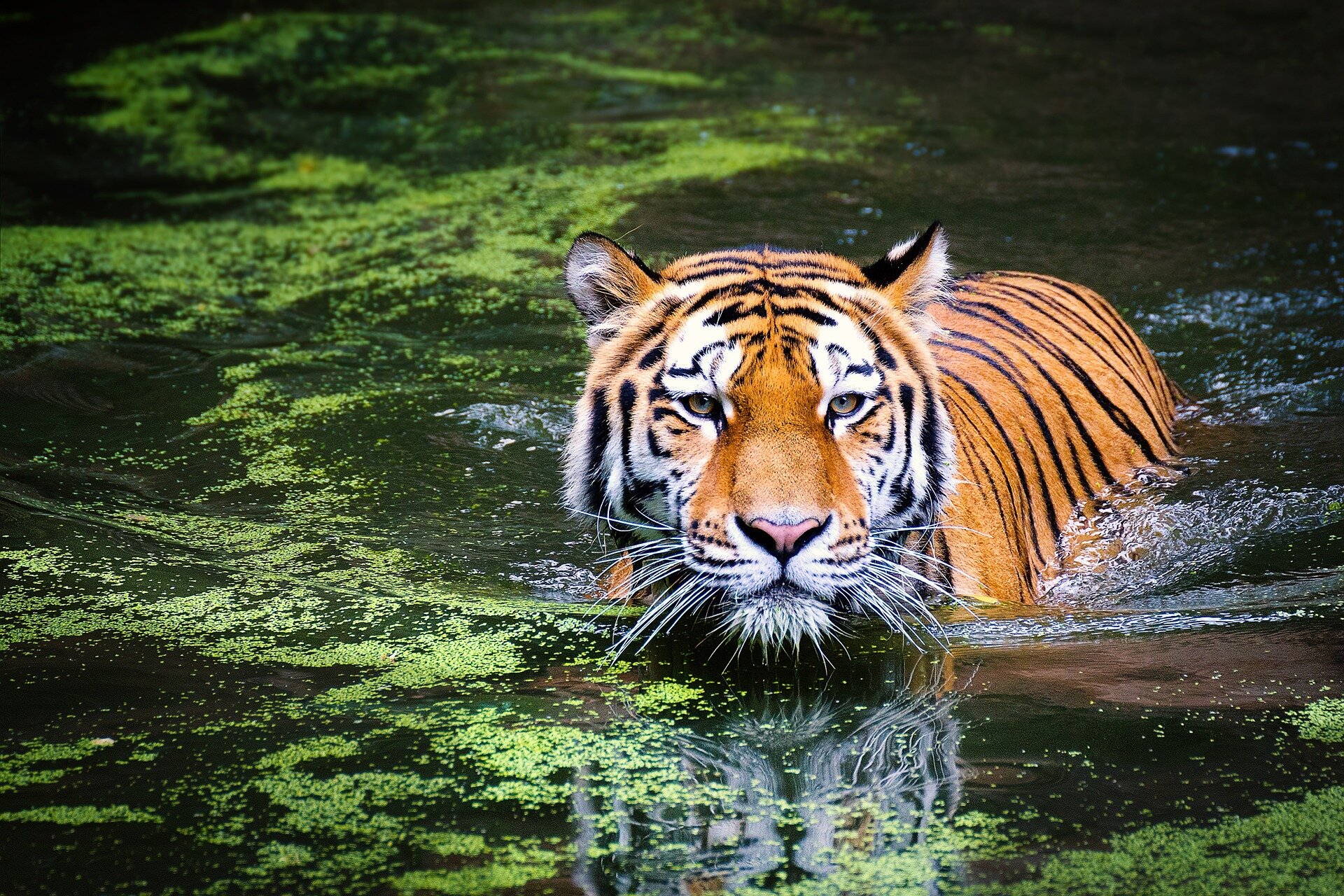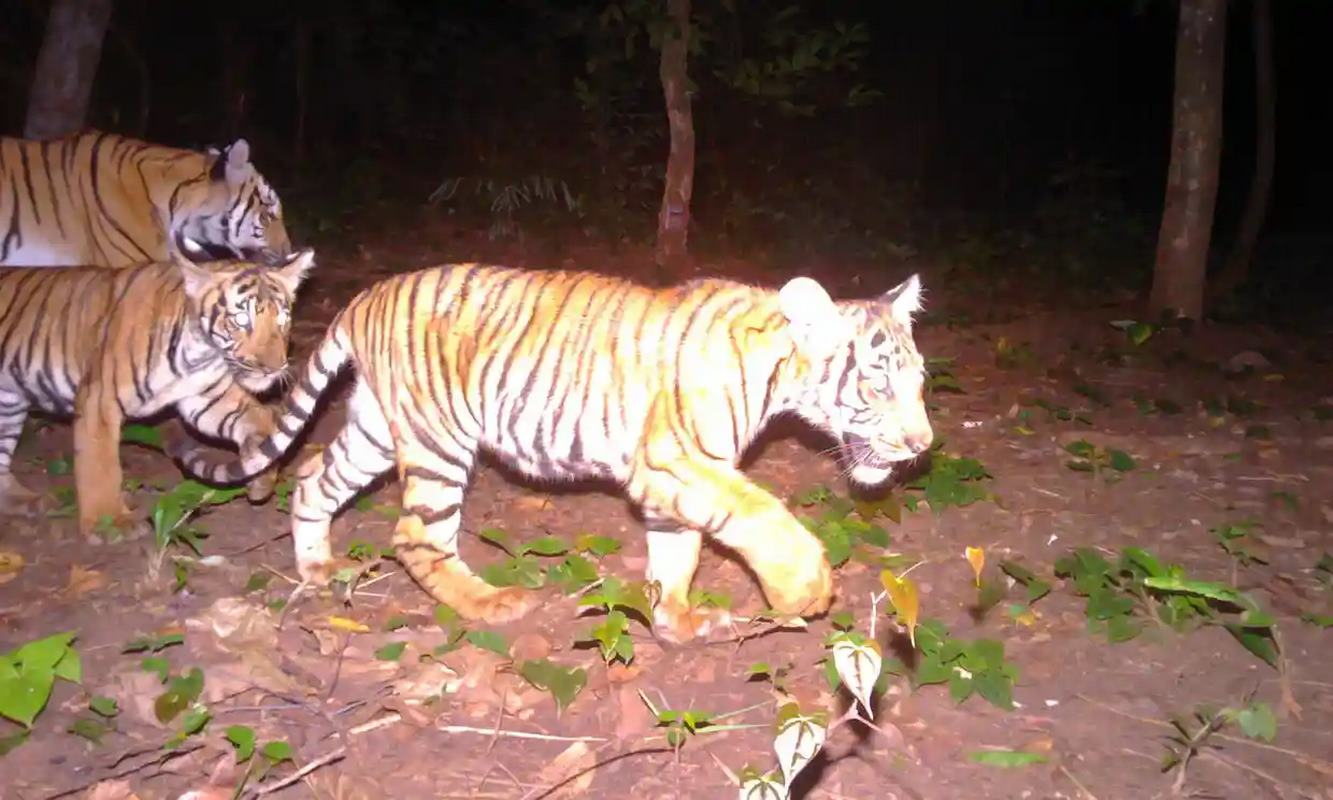There’s phenomenal news for the Endangered tiger: There’s been a 250% increase in tiger numbers in Thailand’s Western Forest Complex (WEFCOM) over a 15-year period from 2007 to 2023.
Thailand’s remarkable success, increasing the number of tigers in WEFCOM from about 40 to more than 140, stands in stark contrast to the tiger’s fate elsewhere in Southeast Asia. Tigers disappeared from Java and Bali before the 21st century, and from Cambodia, Laos, and Vietnam by the mid-2000s.
Elsewhere throughout the region, tigers are still under enormous pressure from poachers as well as from the loss of their forested habitat. As a result, tigers now persist elsewhere in Southeast Asia only in small or isolated populations in Sumatra, Peninsular Malaysia, and Myanmar.
Pornkamol Jornburom, Director of WCS Thailand, credits this good news to the efforts of Thailand’s Department of National Parks, Wildlife and Plant Conservation, (DNP) which implemented high-quality patrolling, insulating tigers and their prey from poaching and the destruction of habitat.
“We see very strong correlations between better law enforcement and the recovery of tigers,” said Jornburom. “Prior to this, illegal hunting and logging were rife in WEFCOM, and tigers were on a path toward extinction. Here, as elsewhere in Asia, good enforcement is the cornerstone of the tiger recovery process.”
Alongside the massive effort to intensify anti-poaching patrols, WCS and the Thai government worked for two decades to monitor its effects—critical to understanding if it was turning the tide. The team began its work in 2004, setting out hundreds of cameras to capture images of tigers. Because each tiger has a unique stripe pattern, scientists can identify each individual, and track individuals’ fates and population trends as they change over time.
Somphot Duangchantrasiri, a senior scientist with Thailand’s DNP led this work, which has been published in the journal, Global Ecology and Conservation.
He said, “This new study is great news for tigers in Thailand. From the beginning, it was our goal to set up a statistically robust monitoring system to ensure we would have reliable information that could accurately track recovery efforts. We believe this is a good example of how to set up and maintain a strong, independent monitoring program that brings credibility to tiger recovery efforts.”
As WEFCOM’s apex predator, tiger populations are a signal of the overall health of the ecosystem, so the team also closely monitored the wider effects of rigorous patrolling. Two companion research papers document a dramatic recovery in prey populations, including the first documented cases of banteng, an Endangered species of wild cattle, appearing in parts of the forest where they had never previously been reported.
Apinya Saisamornin from WCS and Kasetsart University in Bangkok where she specializes in tiger prey said, “Tigers can’t exist in the wild without a healthy abundance of prey species. Our study showed a doubling in numbers of both sambar [a large, elk-like deer], and banteng, the key prey species for tigers in WEFCOM. Without the recovery of prey, tiger numbers could not have grown as large as they did.”
Taken together, the results tell a story of large-scale, ecosystem-wide recovery. Dale Miquelle, a senior tiger conservationist at WCS said, “The news out of Thailand of a 250% increase in tiger numbers over 15 years is proof that the tiger can be saved but it takes long-term commitment on focused interventions. It does not happen overnight.
“Recovery efforts are important not only for tigers—these same forests protect most of the terrestrial biodiversity of Asia, provide ecosystem services for millions of people, and buffer the impacts of climate change by retaining healthy forested ecosystems.”
Citations:
Somphot Duangchantrasiri et al, Rigorous assessment of a unique tiger recovery in Southeast Asia based on photographic capture-recapture modeling of population dynamics, Global Ecology and Conservation (2024). DOI: 10.1016/j.gecco.2024.e03016
Journal information: Global Ecology and Conservation
This article by Wildlife Conservation Society was first published by Phys.org on 29 July 2024. Lead Image: Credit: Pixabay/CC0 Public Domain.
What you can do
Help to save wildlife by donating as little as $1 – It only takes a minute.







Leave a Reply